Last week, I completed a 12 day Hokkaido Landscape Photography Adventure with special guest David duChemin and 13 other amazing photographers. This was the first landscape only tour that I’ve done in Hokkaido, and we had a pretty amazing time, so from today I’m going to walk you through a selection of photographs from the tour to give you a taste of what we got up to.
Before we start looking at the images, let me give you a little background about this tour. When I first started doing my Hokkaido tours, I had it split into two parts, a Landscape leg and a Wildlife leg. People could book for one or the other or both initially, but we found that the people that liked the landscape leg didn’t really enjoy the wildlife part and vice versa, and the majority of our participants seemed more attracted to the wildlife than the landscape, so we stopped doing the landscape leg after a few years.
The main landscape leg of the original tour was held in the Biei area, in central Hokkaido, and this is where we spent the first three days of this new 12 day tour. The rest of the tour was based on a reconnaissance trip that I did in January of 2011, four years ago now. Many people had been asking about a Hokkaido Landscape tour, and I figured it was worth putting something together, but then as the business grew we started to do two wildlife tours each season, and this landscape tour kind of got put to the back-burner until this year.
I really wanted to make this happen though, and so when my friend David duChemin asked if there was any way to do a Hokkaido Landscape tour, this was my obvious choice, so I finalised the itinerary and started to take bookings and now here we are a year later with some great memories and a new tour on our yearly schedule.
I ended up with 79 images from this trip that I’m happy with, and although I’m sure I’ll remove a few from my selection as I live with them for a while, I decided to try to get down to enough images to talk about this tour in two episodes, and I’ve selected 24 from my 79, so we’ll discuss 12 images in this and another 12 in next week’s episode.
We start in Biei, a particularly beautiful part of this wonderful northern-island of Japan. You may remember photos from this area some years ago, if you’ve been following the podcast for a while. I planned for three days in this area, because it really requires falling snow to make it as beautiful as it can be, and we didn’t get any snow on the first day. We still have some beautiful photos, but it didn’t really start to kick in until the middle of the second day.
As we drove to our lunch location, I noticed a tree on a hill with a fence almost along the ridge of the hill, but this was on a busy trunk road, so we turned the bus around, and we got off in a safe place a little up the hill, and walked down to a location where we could see this scene (below).
The sky was starting to fill with hazy snow-clouds, and although there was some heavier clouds drifting through the scene, I waited until it was clear and white to make this photograph. The tiny amount of contrast between the top of the hill and the sky makes it difficult to see the transition, but I love that. I like it when the viewer of the image has to work a little to understand what’s going on, and here you have to work even harder because the line of the fence can almost make you feel that it marks the top of the hill, but it doesn’t.
Note that this and all but one of the images that we’ll look at today have been converted to black and white in Silver Efex Pro 2. I just find that the majority of the images I shot on this trip looked much better in black and white, which is a good thing, because I love black and white, and intended to do just this with the majority of this work as I worked each scene in the field.
As the snow set in, we went back to the grounds of the Takushinkan gallery, home of the late Shinzo Maeda’s work, and now also his son Akira. Shinzo Maeda really put Biei on the map as a landscape photography location, but unfortunately we were so busy photographing the area that we never actually made time to go into the gallery and take a look at his images.
The line of trees that we see in this photo (below) is just behind the gallery, and I’ve photographed these many times in previous years, but the snow that we’d been waiting for reduced this scene to this very minimalist line of trees. If you look closely, you might also be able to see the lines of the snow in the air, and striking lines across the tree trunks too.
I love this effect, and it’s much more apparent in this next image (below), from just up the road from the Takushinkan, again with a very subtle line of the top of the hill. I like to use a shutter speed of 1/15 of a second for snow scenes like this, as it’s just long enough for the snow to leave a streak across the image, rather than just being a stationary dot. There’s a time and place for stationary snow, but for these landscapes I just think the 1/15 of a second exposure works well.
I have a handful of these that I really like, but I’ll just share this one more (below) before we move on. This again is just a little further up the road from the Takushinkan, and it a simple line of trees, again in heavy snow, with a 1/15 of a second exposure. You may need to click on the image to really see the detail, but in this one you can also see the snow in the air more easily, and I love the detail in the line of trees, with the snowy brush-strokes across them.
We’d visited this location on the first day, but when there is no snow, there are mountains and other elements in the background that really don’t allow for this very minimalistic scene. It’s so much better when the snow comes to enable you to really reduce the scene to the few basic elements of an almost only implied hill, trees and snow.
The snow remained into the following morning, so we revisited another of my old haunts, where my tree is still sitting proudly atop of it’s hill. Many of the trees in this area are named, such as the Parent and Child trees just across from this one, but this particular tree doesn’t have a name, although we’ve started to call it Martin’s tree.
The photos of this tree from the first afternoon without the falling snow were OK, and different, but I love it when I can reduce a scene like this, so as I headed up the hill back to our bus towards the end of our session here, and the snow started to fall a little heavier for a while, I couldn’t resist making this photo.
On our last morning in Biei before moving on, we visited the White-Beard Falls, that you can see in this photograph (below). We didn’t necessarily need the snow on this morning, but we’d hoped so much for it on the first couple of days that there seemed to be no stopping it now, so we worked with it. The mineral content in the water actually gives it a beautiful blue tint that is enhanced by the dawn light, and a little bit of Lightroom work.
This was a 1/5 of a second exposure at ISO 800 as the light was pretty low. Working with the movement of the snow though, I like how the snow flakes seem to have scribbled on the image, leaving their crazy abstract trails all over it. I wonder if you can also make out the man’s face in the centre of the left third? It’s a profile looking like he’s looking upwards toward the top left corner of the image.
After breakfast we checked out and started to drive over to the western coast of Hokkaido. The heavy snow prevented us from taking the originally planned route, and it added a few hours to our drive, but we always knew that this was a risk on this tour, with the harsh Siberian weather often beating down on this part of Japan.
Further up the coast, the weather actually got quite warm for this time of year, with temperatures drifting around 0°C (32°F), which did make it easier to photograph, although I would have preferred to enable the participants on their first visit to experience the real Hokkaido weather conditions.
In this next photograph(below) from near Rumoi, we see our first contact with Tetrapods. The word Tetrapod actually means four-legged and is a classification of animals, but it was used here in Japan by a company called Fudo Tetra Corporation who are a major producer of these wave breakers, used to protect the shoreline or seawalls from the pounding waves.
Luckily for us, these Tetrapods are often placed in the sea in such a way that they can add a really quite beautiful additional elements in an otherwise quite boring seascape. Here I used a shutter speed of 0.6 seconds to record some of the movement of the waves in this rough sea.
We can see the same group of Tetrapods appearing in a supporting role in this next photograph too (below). Here’s we’d climbed down to the beach, where there was a second set of Tetrapods sunk down in the sand, and there was a rock that had been trapped between two Tetrapods, which I thought was another nice element for this photo.
I’d broken out the ND400 nine stop neutral density filter for this image, and was now shooting 30 second exposures, making the sea much smoother, although the rough seas still kept a lot of texture as they washed up against the shore, and in the foreground left their image on the beach as the waves rolled in and out.
A little further up the coast on the following day, we stopped at a small harbour and spend 90 minutes photographing the various features such as a stone pier and, you guessed it, more Tetrapods (below). The compositional opportunities are endless, and even from this batch, I have a number of different shots that I really like. Here I chose to show you pretty much the simplest one, with just a patch of Tetrapods and a natural rock and the patterns made by the waves during this 30 second exposure.
Having spent two nights in the centre of the western coast of Hokkaido, we had a good drive up to the northern tip where we’d spend two more nights. Of course, the drive to our next location is always a part of the overall experience, and we continue to look for opportunities such as this one (below) along the way. We found these interesting multi-layered Tetrapods including the type in the foreground that look like giant practice golfballs, some of which were broken forming an additional layer of interest.
For much of this trip we find ourself standing on pretty uneven ground through the snow, and this was a particularly nasty spot, as we were standing on these golfballs in the snow to get this shot. You have to be careful not to let your feet slip down into the holes, although with care, you can stand on the edge of these holes to get a footing and set up your tripod, so it works both ways.
Although I had many locations already scouted out, we spent a bit of time between known locations just heading down roads that had been cleared of snow, enabling us to drive on them, and that’s what lead us to shots like the last one, and as we headed back to the trunk-road, we stopped to quickly shoot these amazing withered plants that we noticed dotting the snow-covered landscape (below).
I called this photo “Stark Ballerina” as there’s something about the pose that really reminds me of a ballet or jazz dancer in one of those extreme poses that they hold for a moment before collapsing down into a crouch. I know it’s probably just me, but there’s something very stark and beautiful about both the physical image and the mental image I’m creating from this.
We spend a further two days in Wakkanai, the northern-most city of Japan, and with that location as a base, we photographed things like these fish drying racks (below). There were a few fish out drying too, and we met the owner of the company who’s land we’d gotten permission to be on to photograph these.
This was a 75 second exposure, now using both an ND400 and an ND8 stacked for just under 12 stops of neutral density. There wasn’t as much detail in the sky as I’d hoped, and my initial edit that I shared last week had a bit of a halo around the frames, so I’ve reworked this making the sky much whiter, and starker, which is probably closer to the original feel of the photograph. This actually takes us to the end of our 12 photographs for this episode. We’ll pick up the trail again next week, with the rest of the two days we spent in Wakkanai.
If you use Instagram, you can see more of this work that I posted as the tour progressed, as I’ve just started using Instagram with the username martinbaileyphotography, which is the abbreviation of my company name, as Martin Bailey and most of the reasonable variants were taken. You can also see photographs from the other amazingly talented participants with the hashtag #sakeandsnow.
As you know I’m traveling again from next week with the first of my two Snow Monkey & Hokkaido Winter Wonderland Tours for this season. I’ve a lot to catch up on during this week at home, but if at all possible, I’ll record the second part of this and release it next weekend before I leave, so you won’t have to wait too long to conclude this first Hokkaido Landscape Photography Adventure travelogue.
As I mentioned in my brief hello from Hokkaido recording last week, I have now started taking bookings for the 2016 Hokkaido Landscape Tour, which you can find at https://mbp.ac/hlpa including buttons to pay your deposit and make your reservation if you’d like to join us for another wonderful adventure.
Show Notes
2016 Hokkaido Landscape Photography Adventure: https://mbp.ac/hlpa
Martin on Instagram: http://instagram.com/martinbaileyphotography
Subscribe in iTunes for Enhanced Podcasts delivered automatically to your computer.
Download this Podcast in MP3 format (Audio Only).
Download this Podcast in Enhanced Podcast M4A format. This requires Apple iTunes or Quicktime to view/listen.

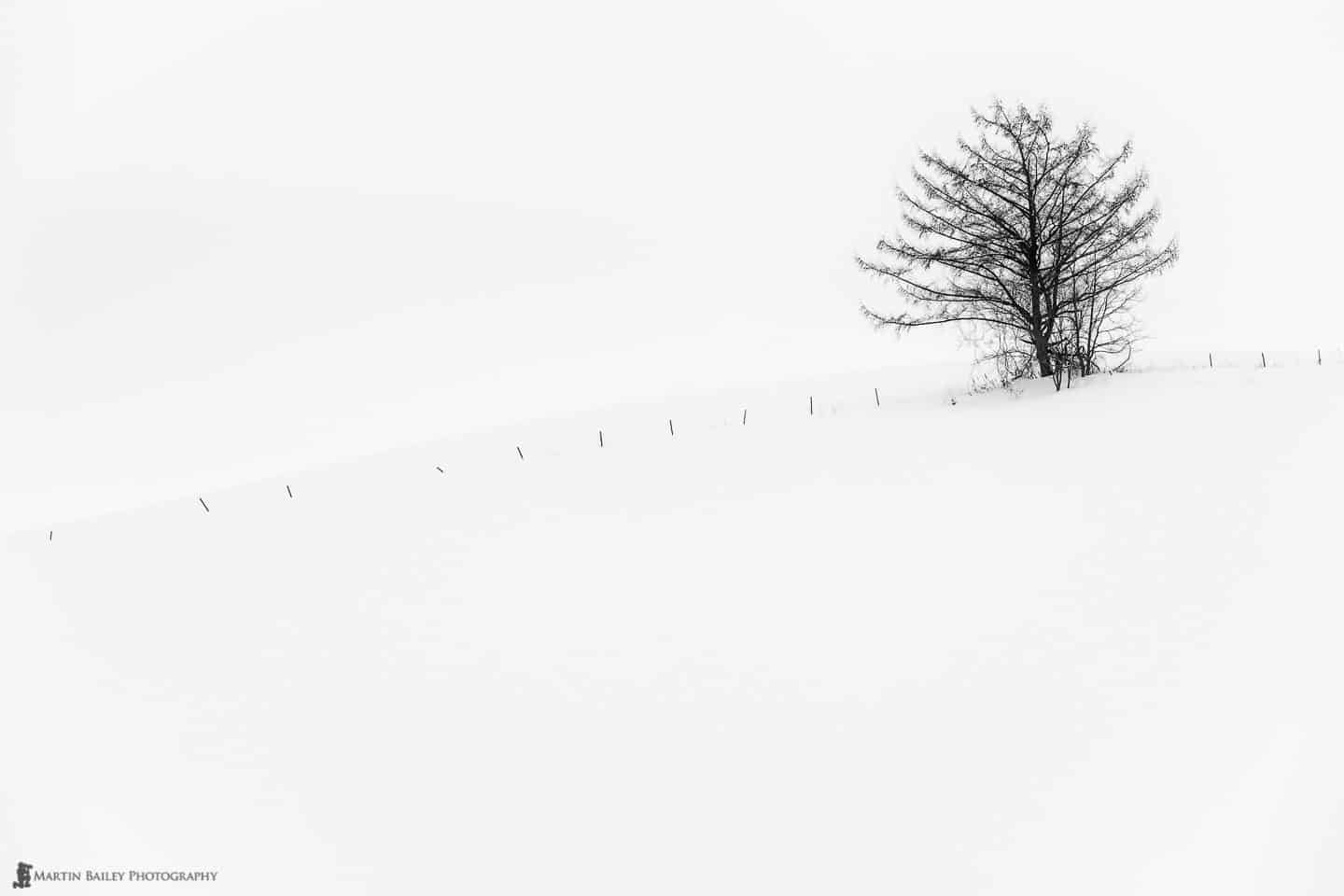
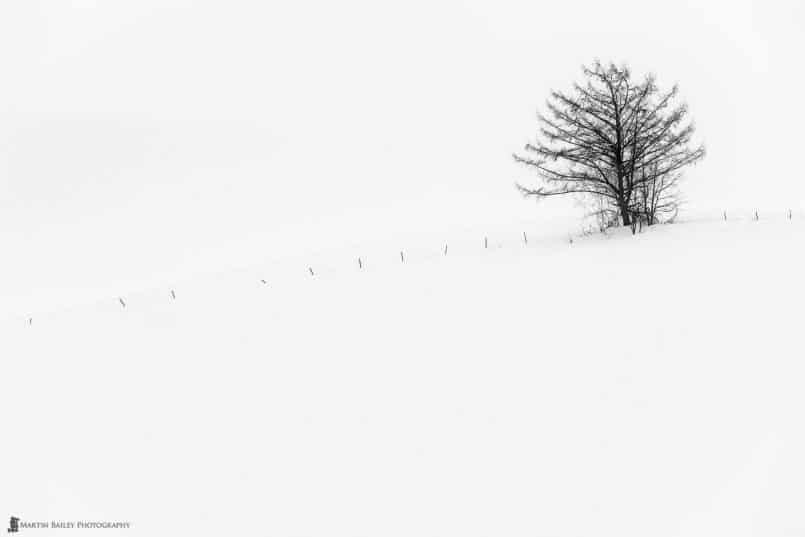
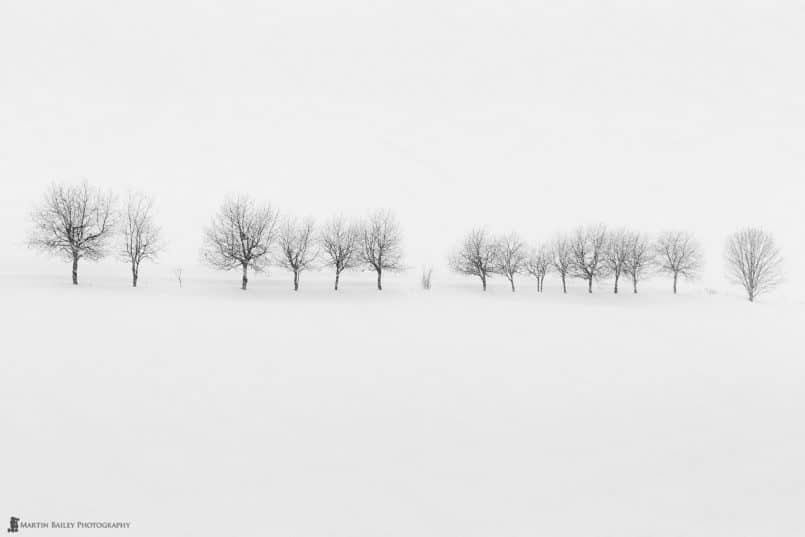
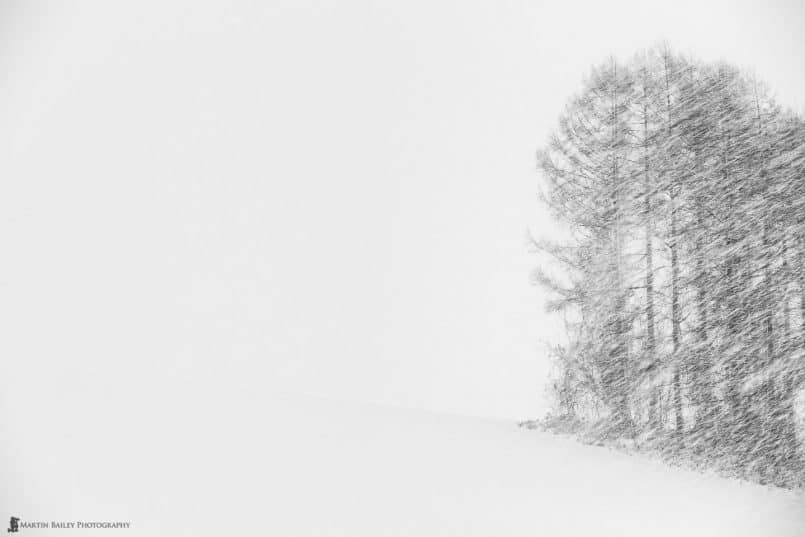
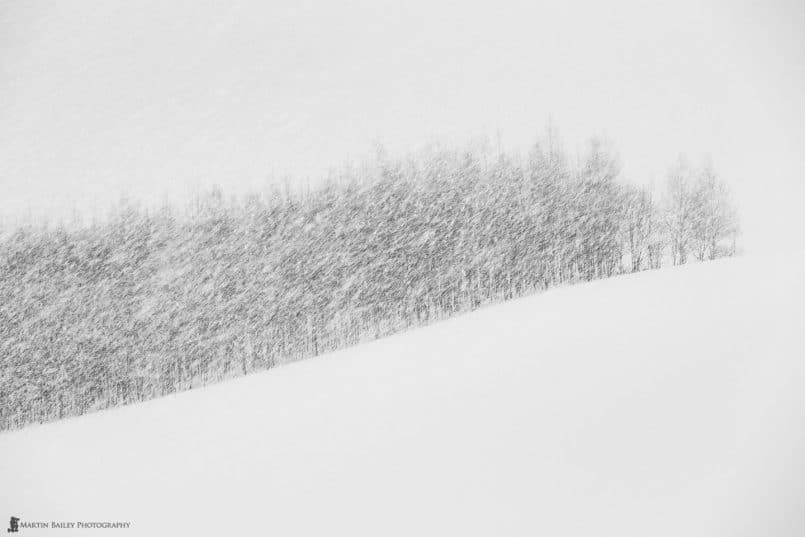
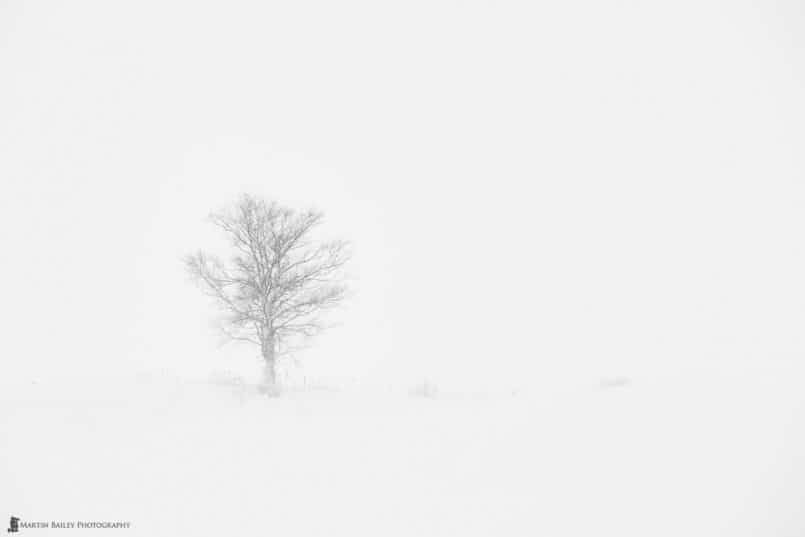
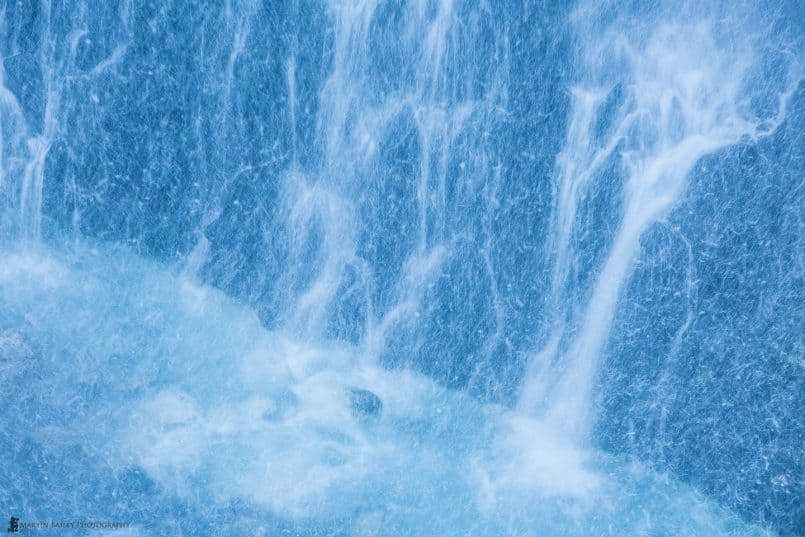
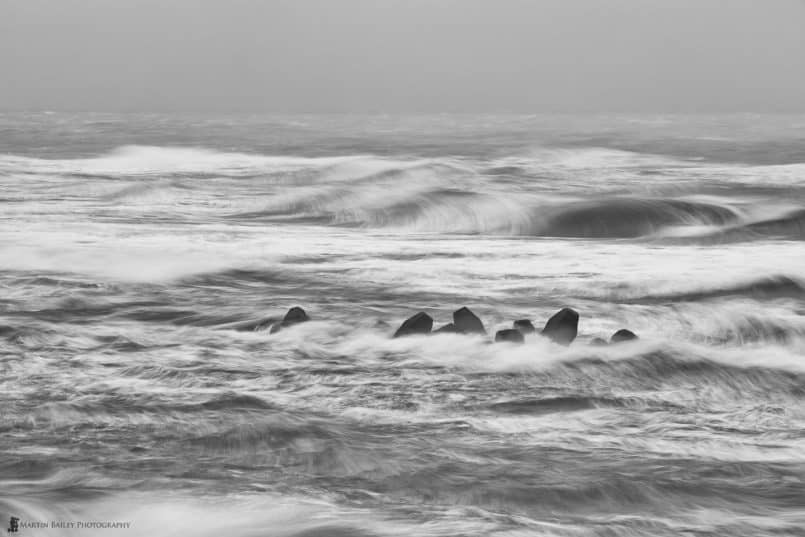
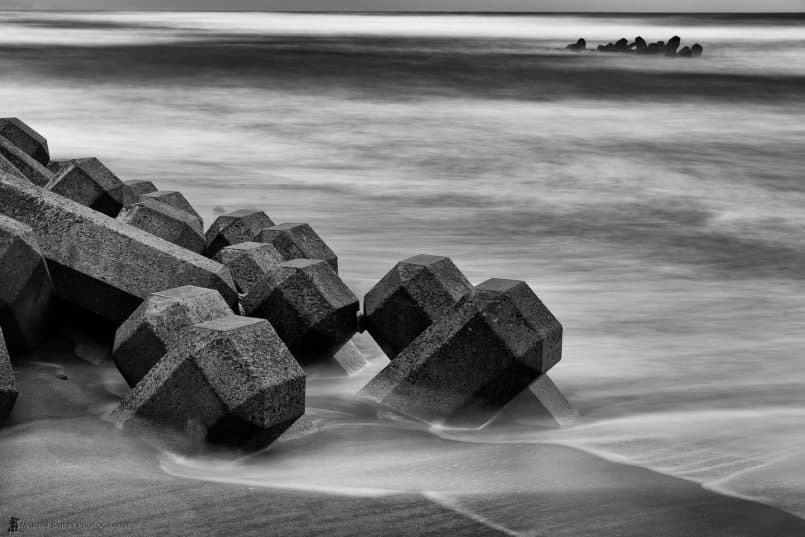
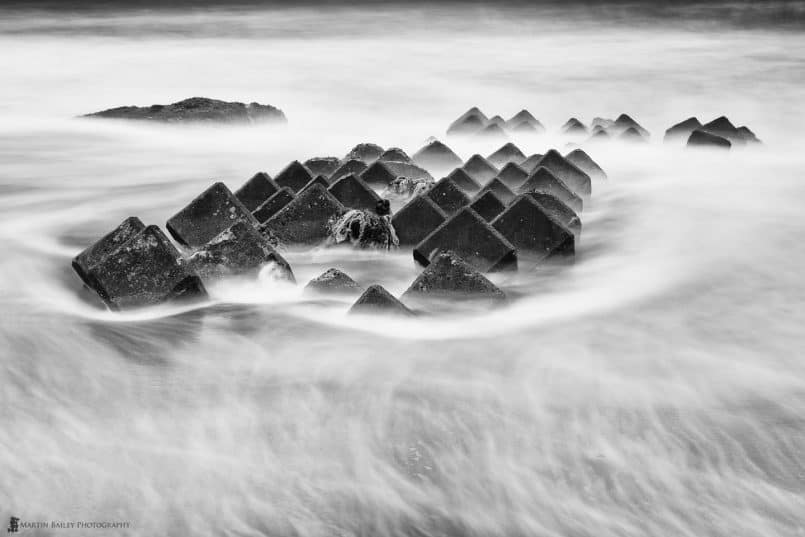
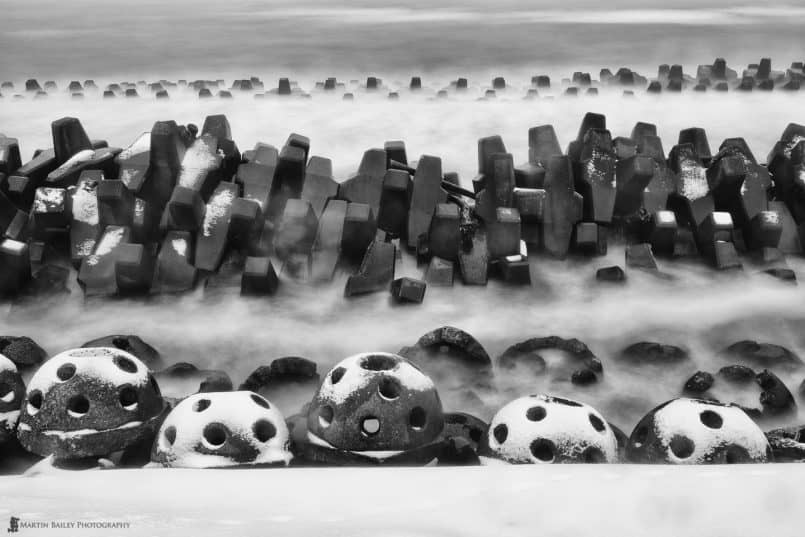
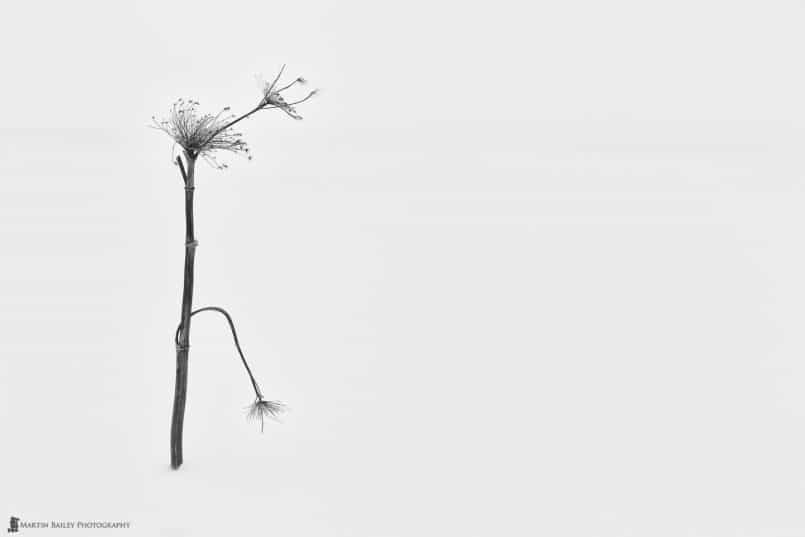
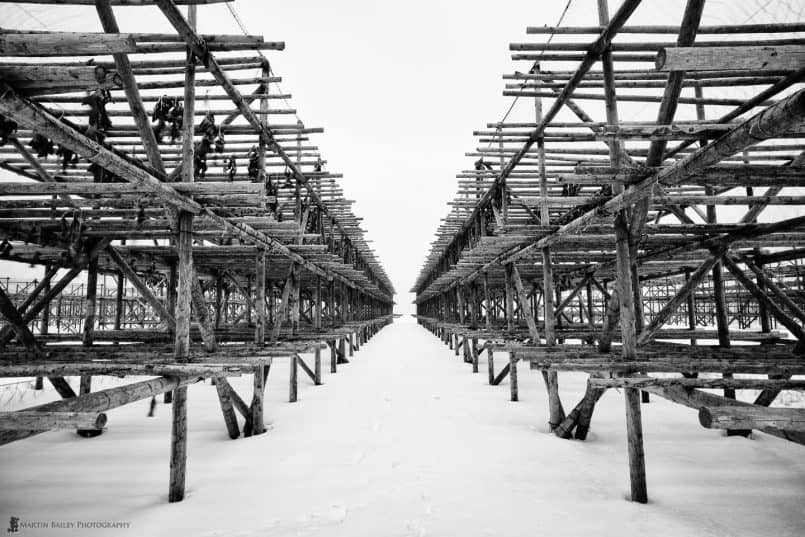
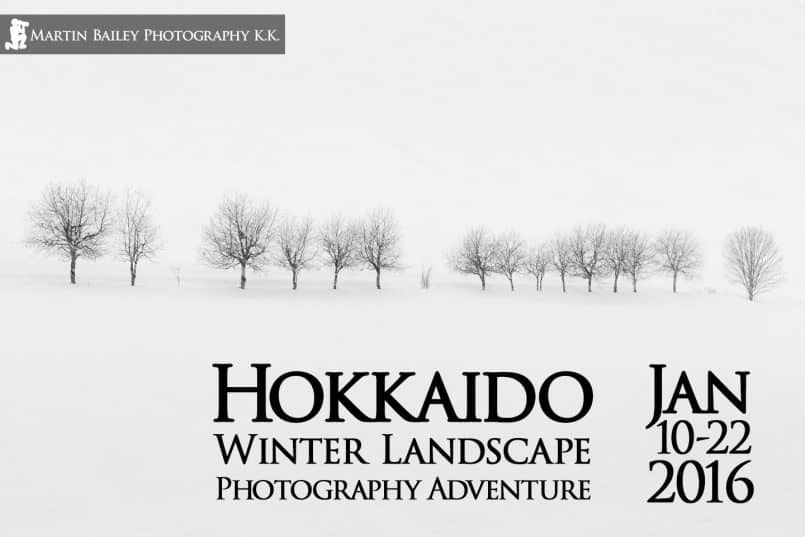

Martin, agree that B&W was the way to go on these images. Very fine work. Also, In the row of photos illustrating “related” podcasts, very taken with the snow monkey amongst the photo gear on the lefthand side — amazing how human these creatures can look — don’t tell or show this last to DdC 🙂
Thanks Morton!
On the related posts, I think the system must generate this list dynamically, as I don’t see that photo now. I think I know which one you mean though. 😀
Really like these shots, especially “Biei Trees in Snow Storm”. It’s just dry & cold (-20C) here in Toronto but I’m hoping to hunt down some snow outside the city this weekend. It’s funny that there’s more snow in England than there is here at the moment. 🙂
Thanks Paul!
For sure, the weather is getting a bit messed up globally. I hope you found your snow outside Toronto! 🙂
The scenery was great but unfortunately no wildlife.
(I posted a few shots @ https://www.flickr.com/photos/pah57/sets/72157650494837171)